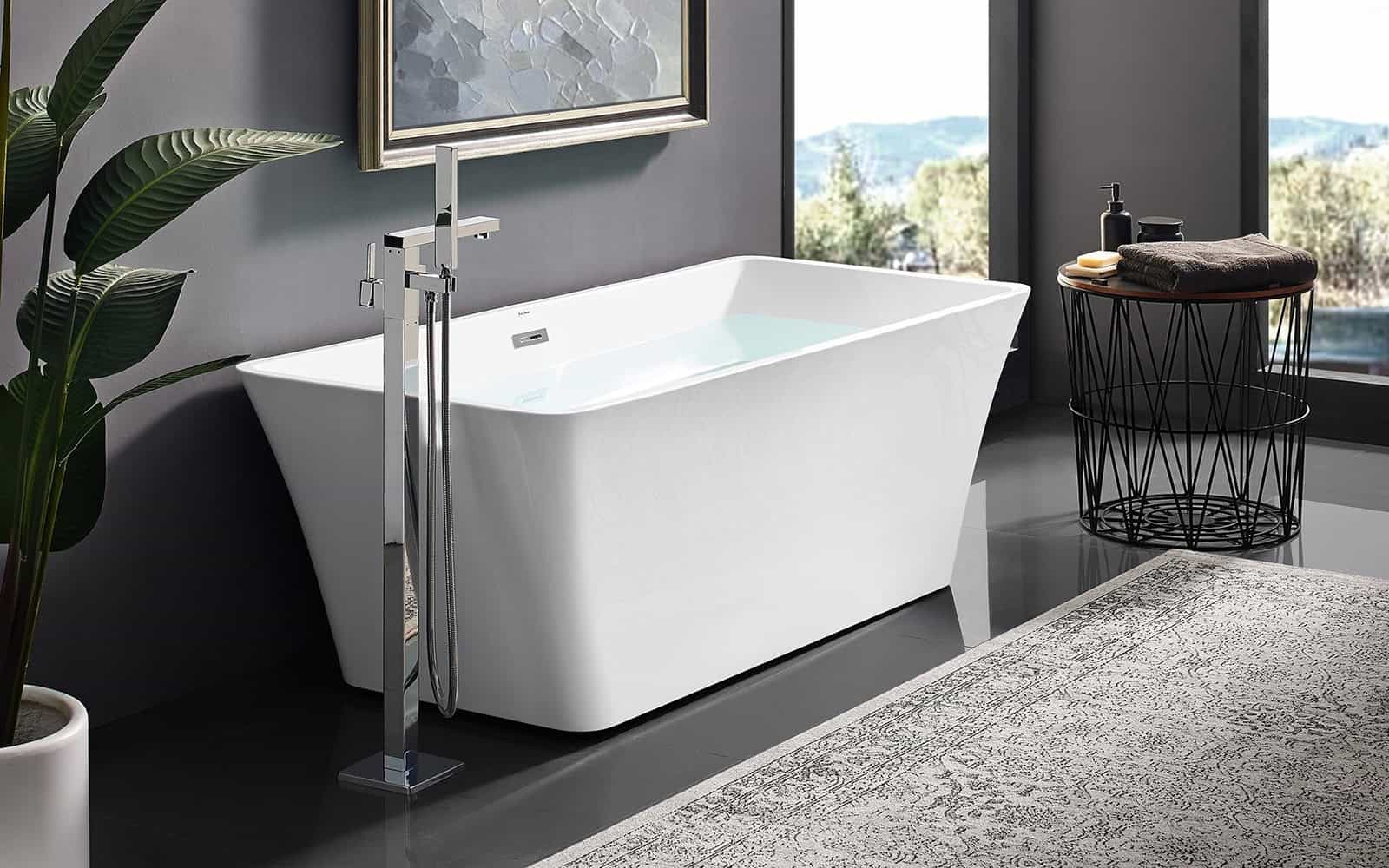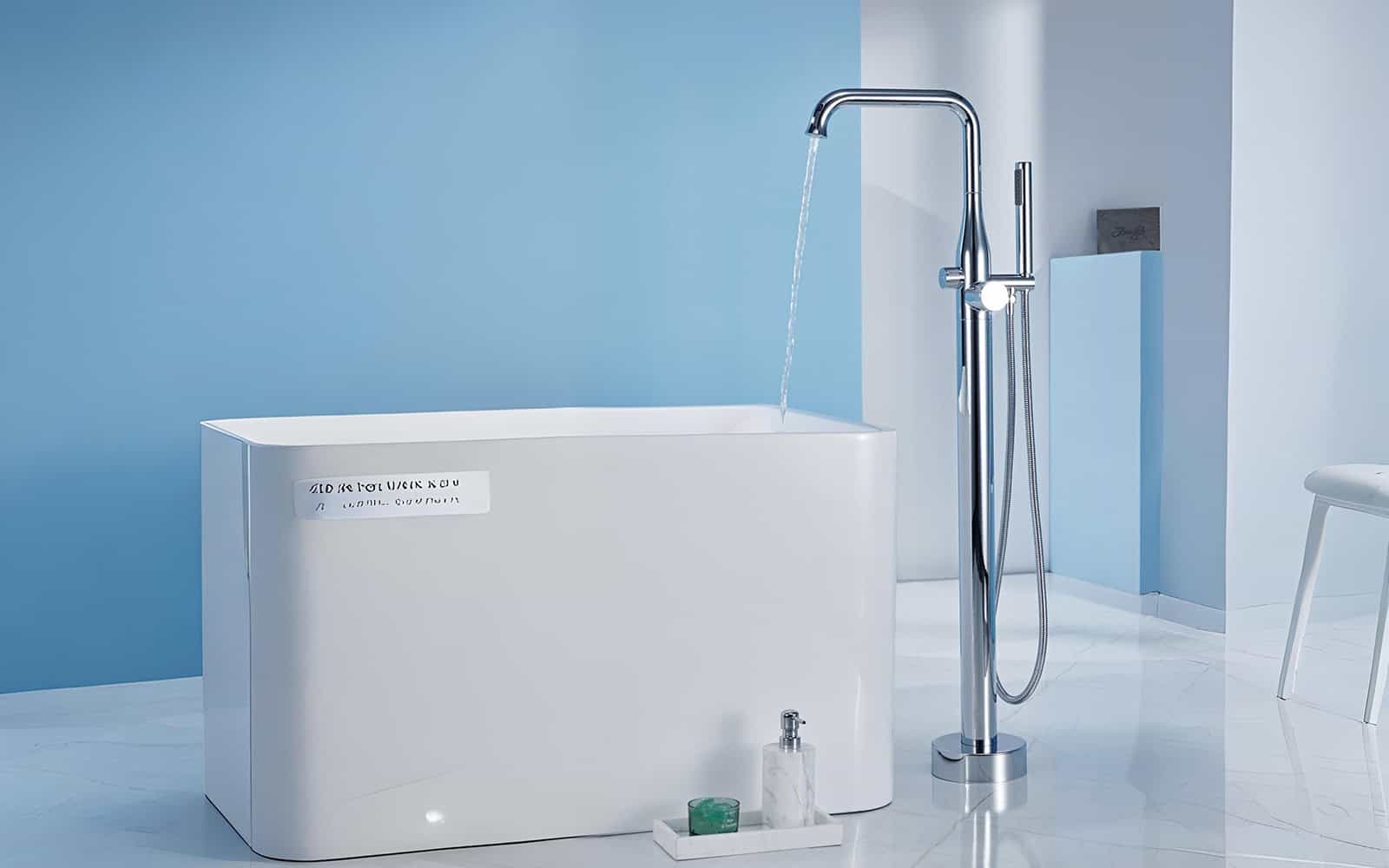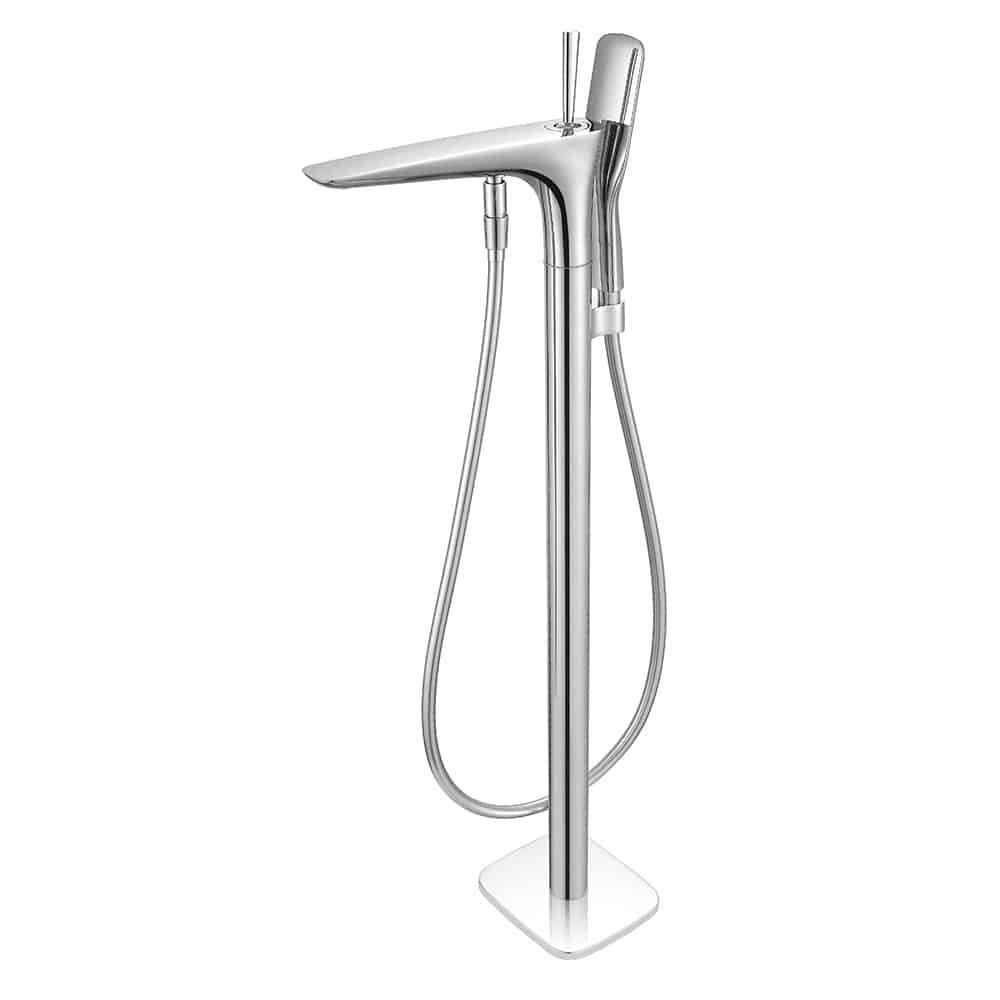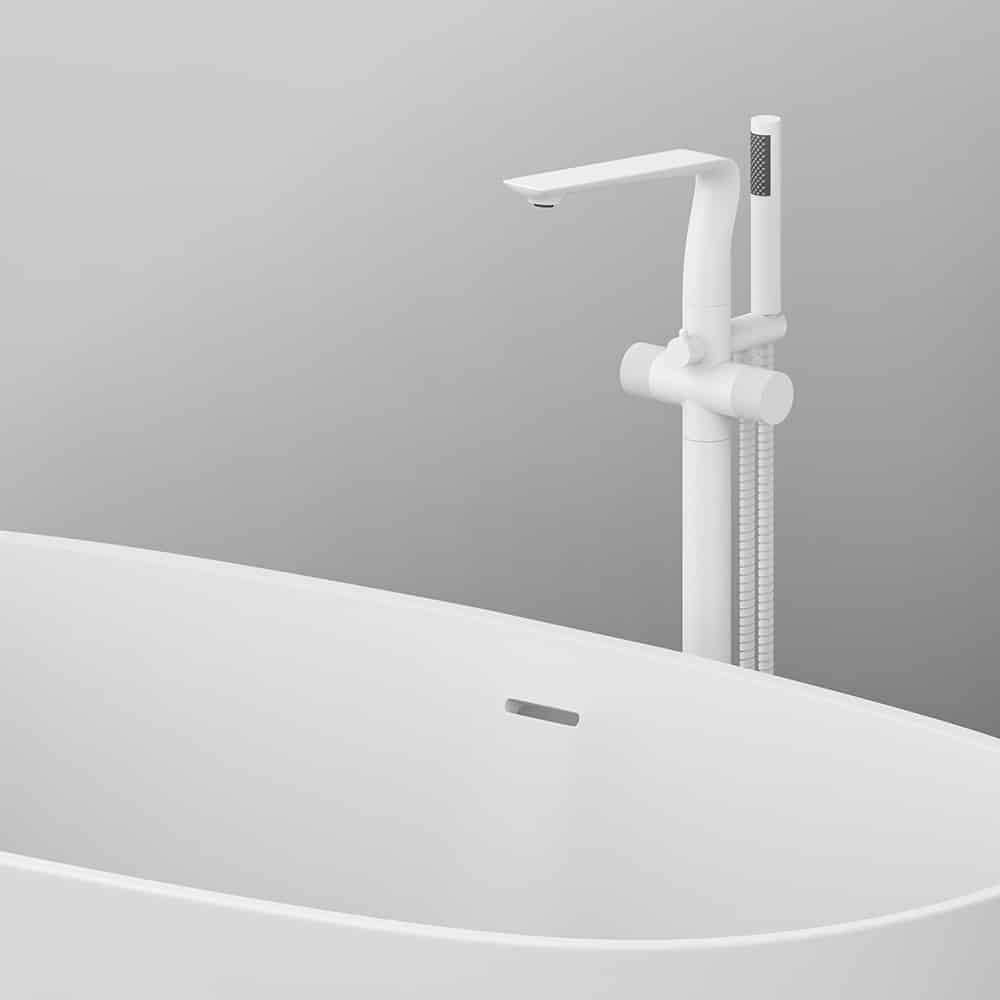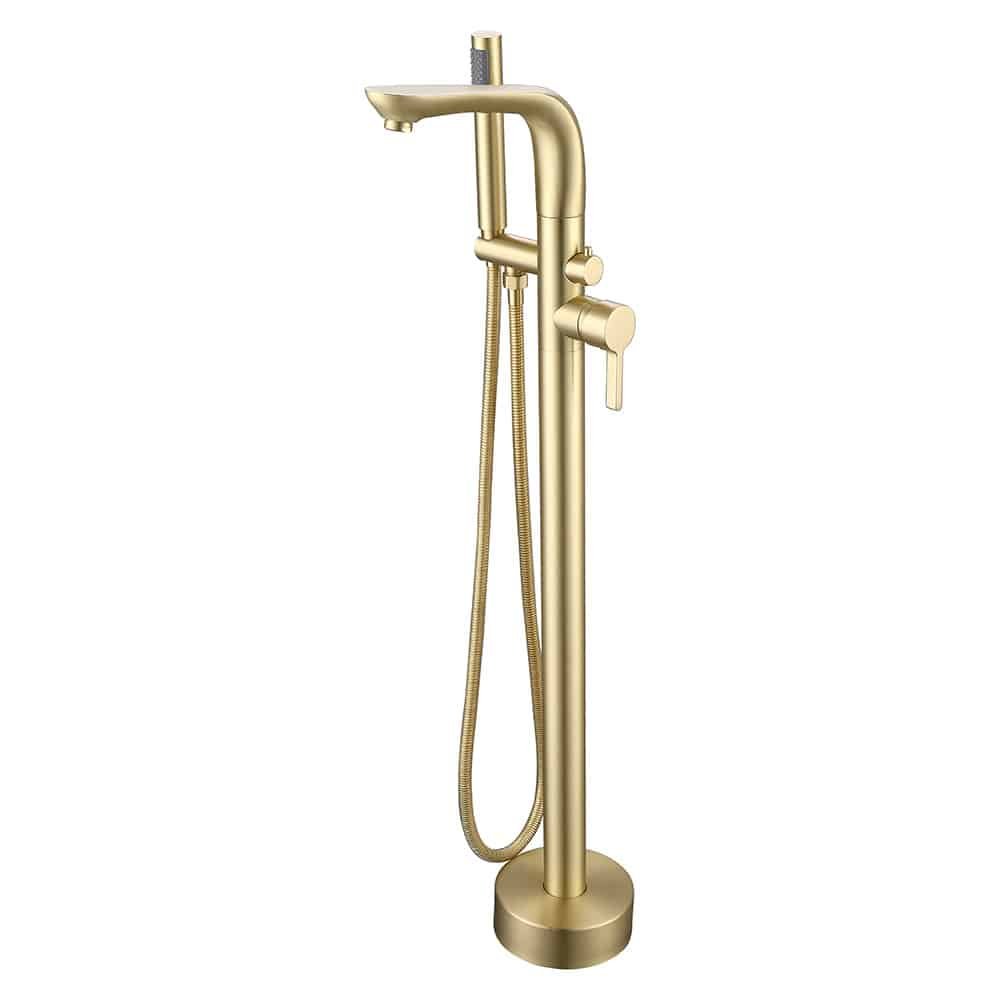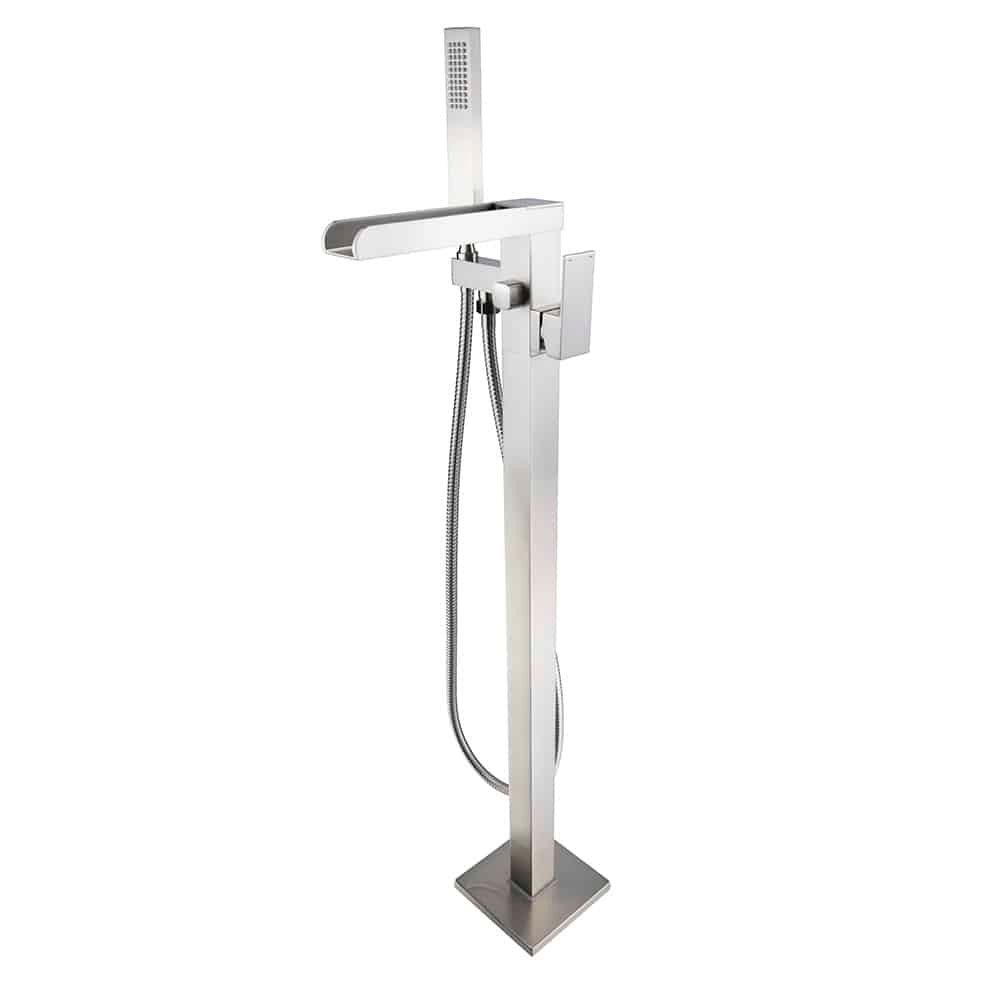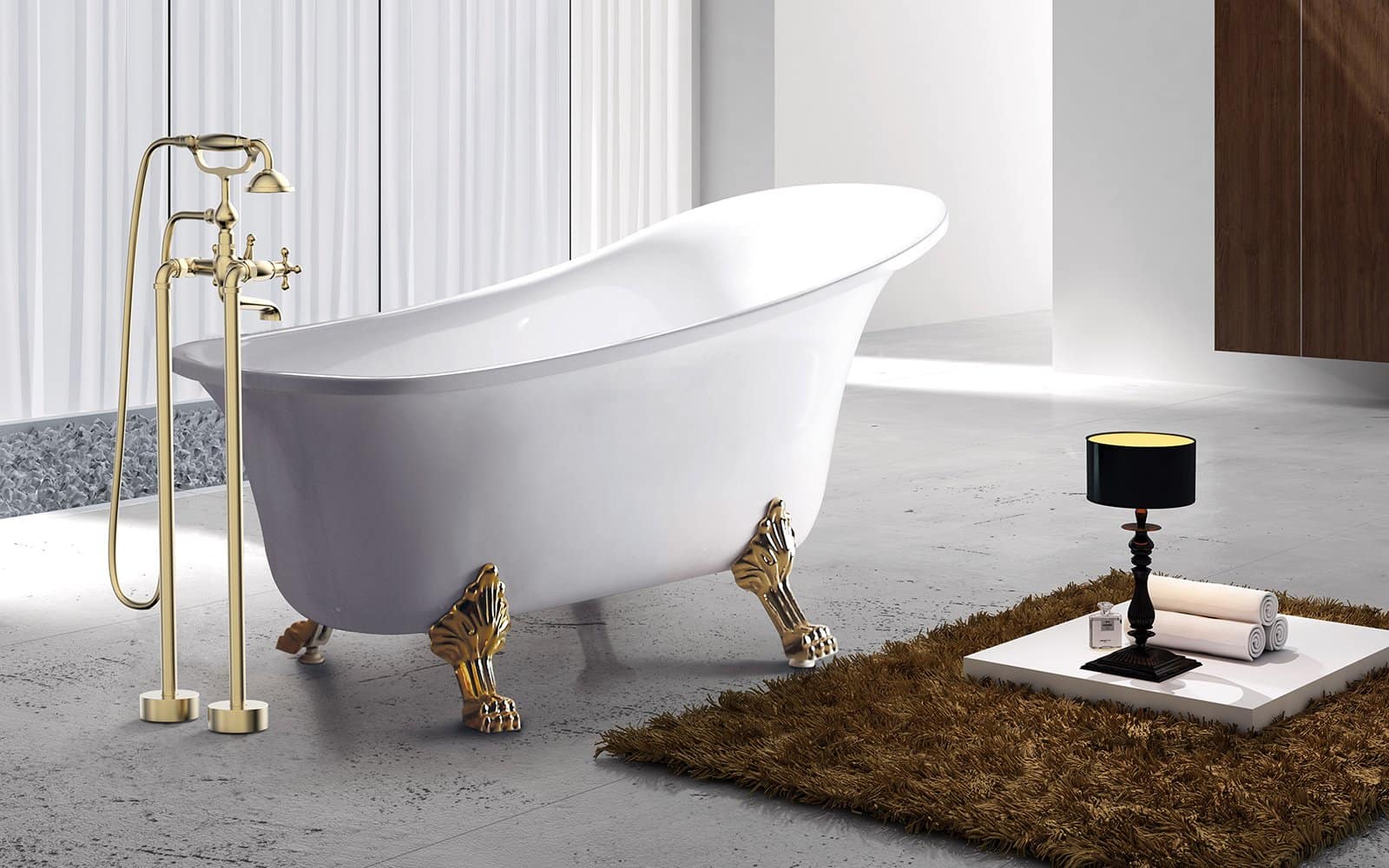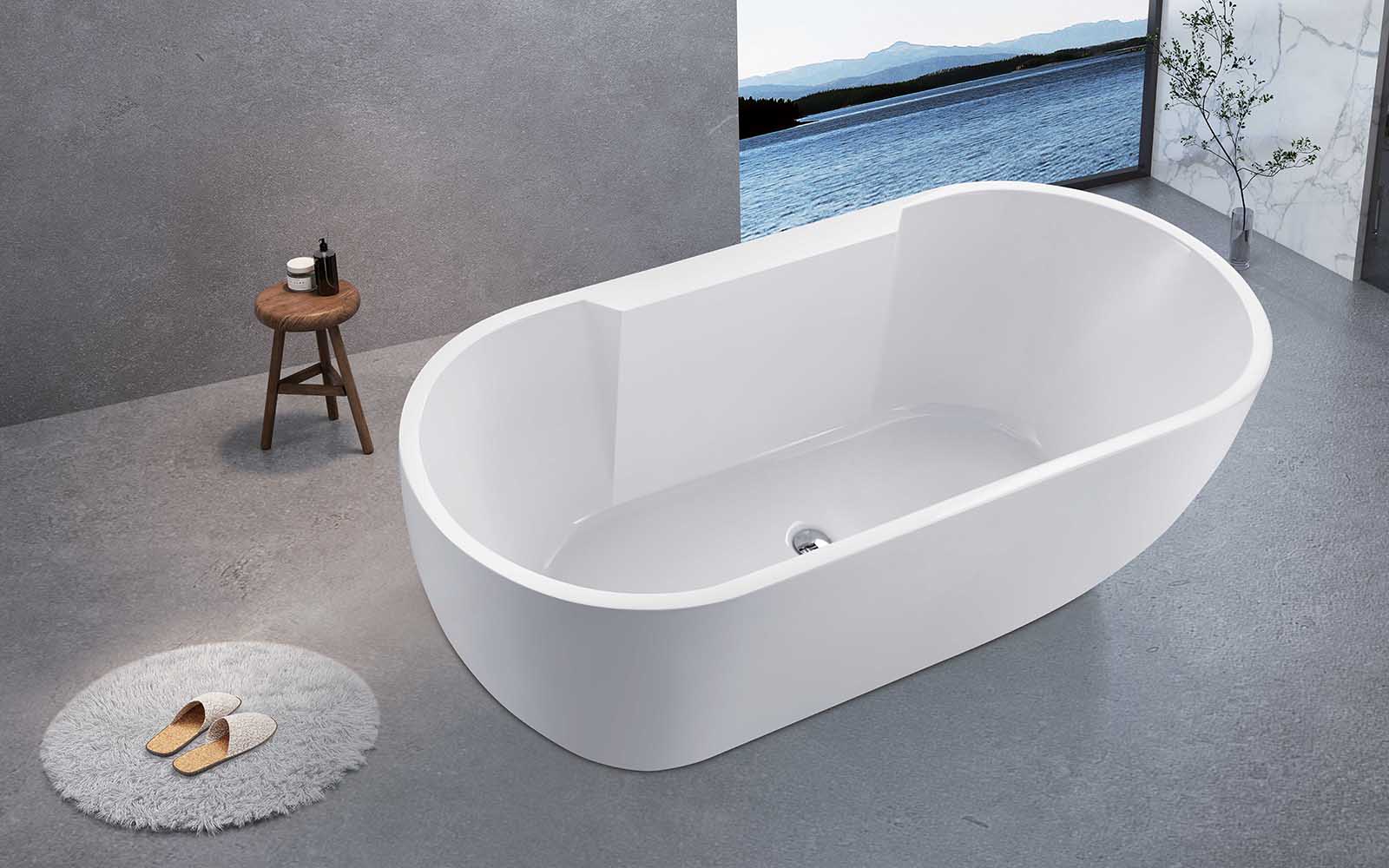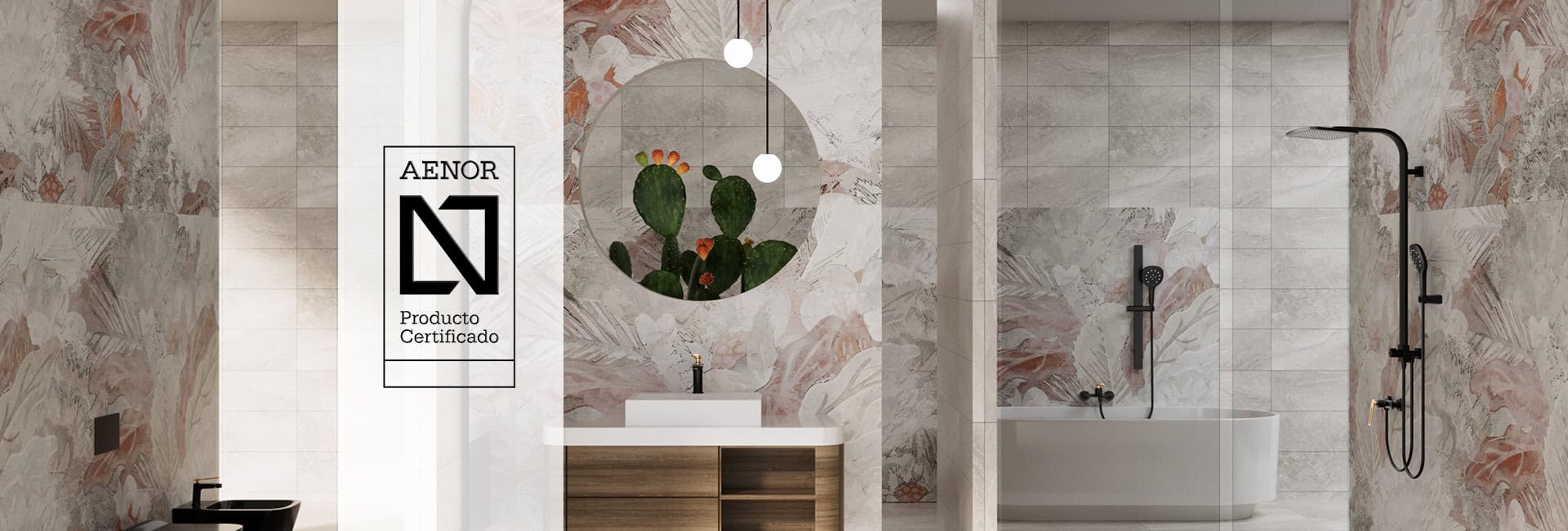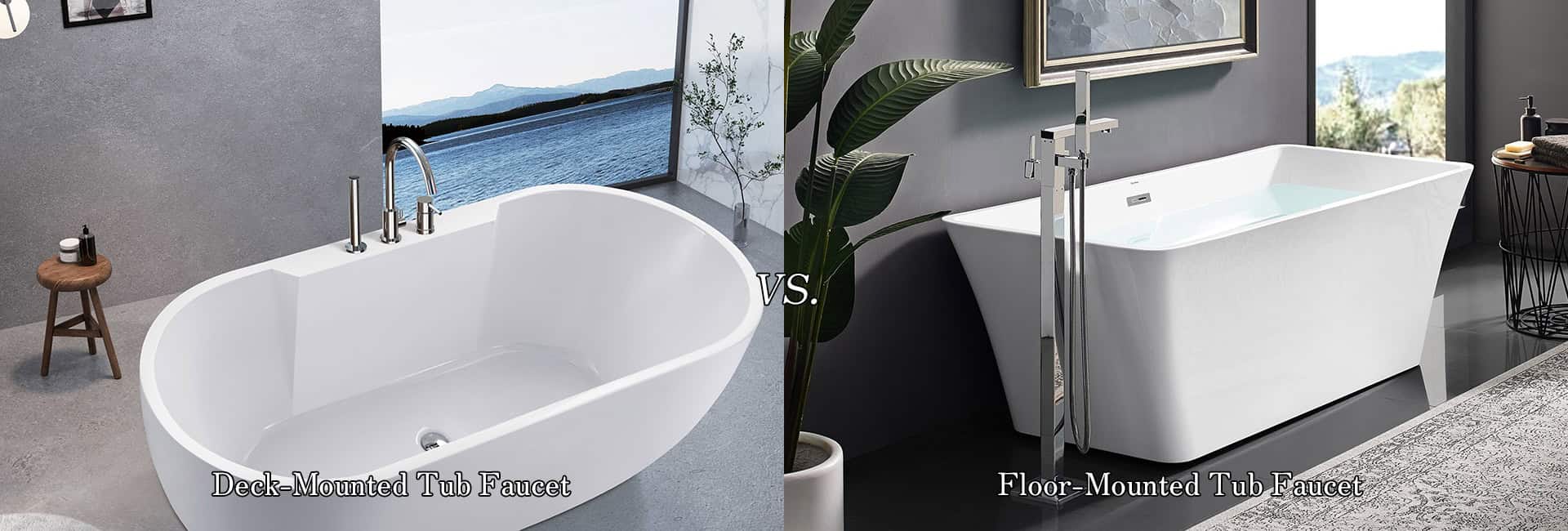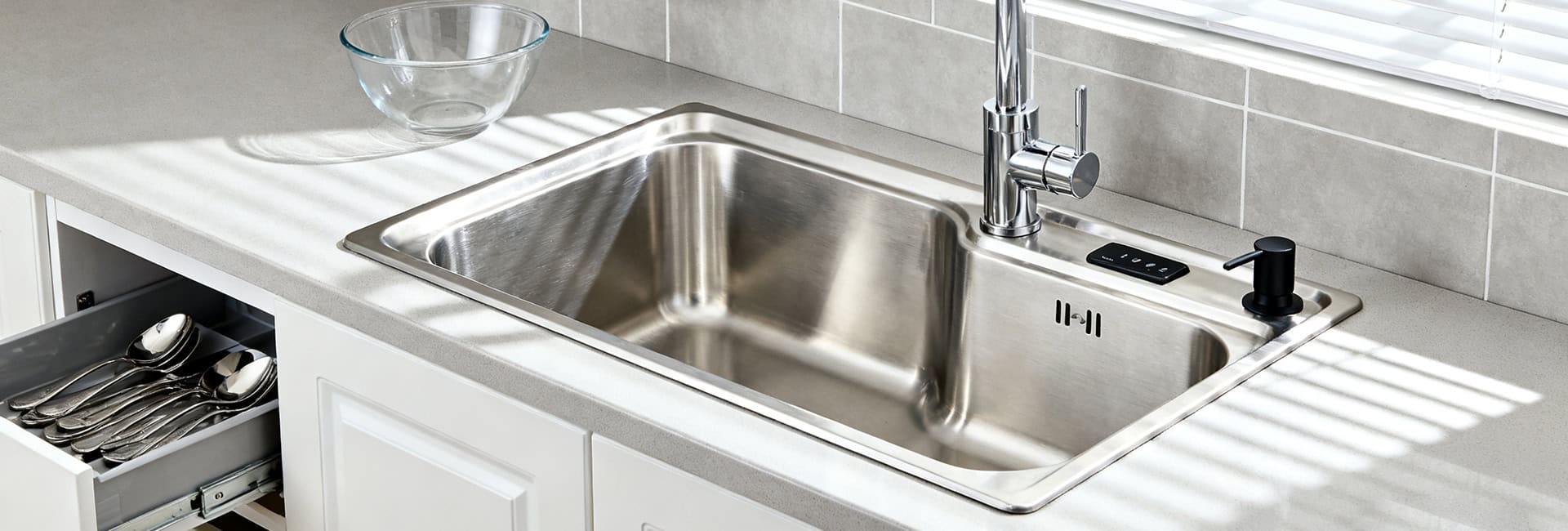If you are having a bathroom makeover, especially one that includes a beautiful freestanding bathtub, you have probably found it hard to choose the right faucet. The idea often includes a beautiful freestanding bathtub as the main feature, but then questions arise about the faucet itself. How do you choose the right model, understand how it works, and install it? These are common questions, and they can often feel overwhelming. Freestanding faucets are a stylish and practical alternative to traditional wall-mounted ones. They can be positioned in lots of ways, which makes them a popular choice for luxury and modern bathroom designs.
This complete guide will teach you everything you need to know to understand freestanding bathtub faucets. When you’ve finished reading this guide, you’ll have all the information you need to make the right decisions for your home.
What is a Freestanding Tub Faucet?
First, let’s clear up some of the words we’ll be using. People often call it a “faucet”, but when it’s connected to a bathtub, it’s usually called a “tub filler”. A freestanding tub faucet is different because it stands alone, attached directly to the bathroom floor, not to a wall or the tub. This design makes it easy to place the bathtub wherever you want, even in the middle of the room. The water pipes for these taps usually run under the bathroom floor, which helps to keep the room looking clean and tidy.
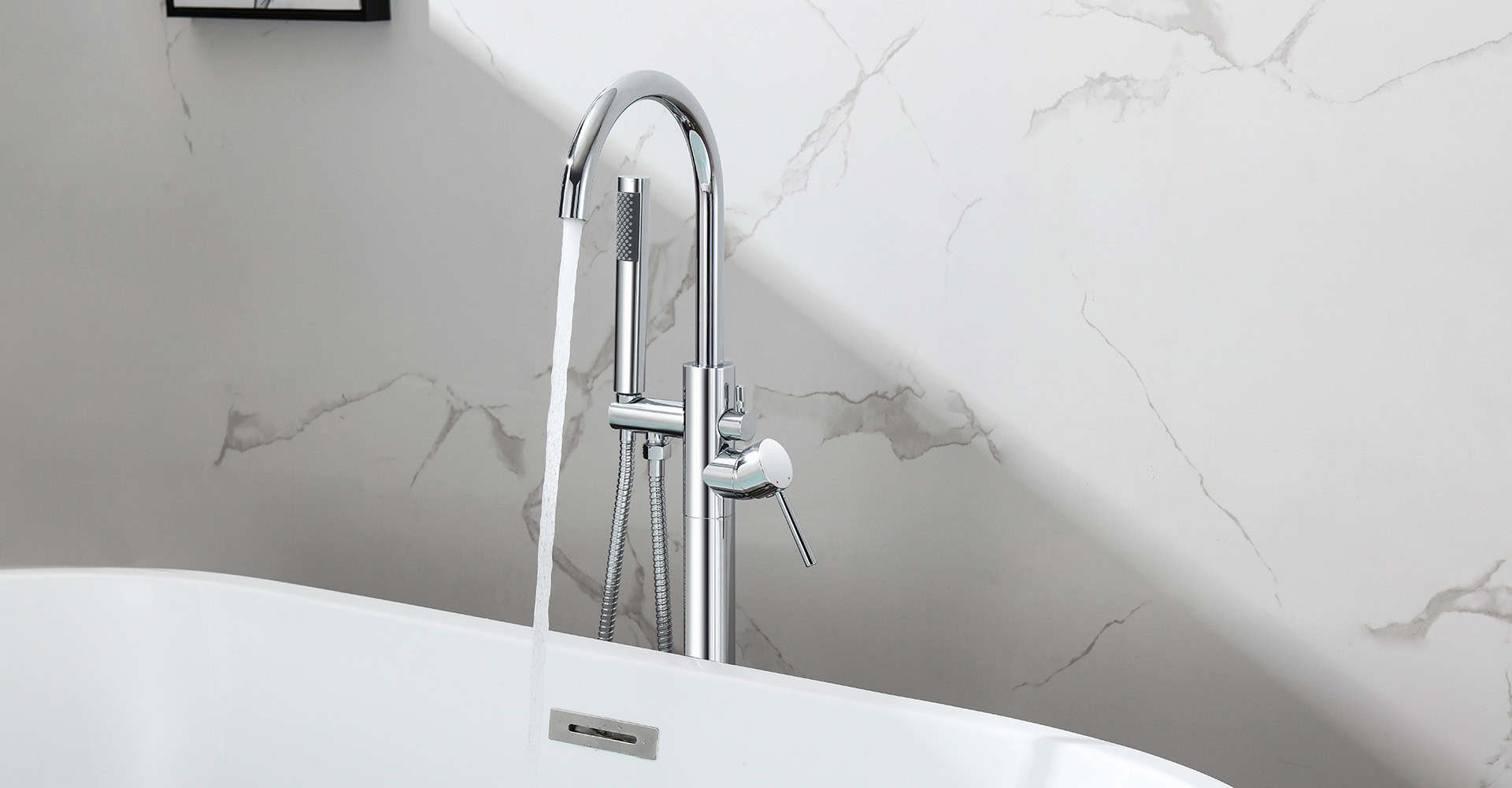
Key Components Explained
To truly grasp how these elegant fixtures function, it is beneficial to examine their individual parts. Free standing tub fillers generally comprise two primary component groups: the visible “Trim Kit” and the hidden “Valve”.
The Visible Elements (Trim Kit): This is the portion of the faucet that is seen and interacted with daily.
- Tub Spout: The main outlet for water flowing into the tub; designed to minimize splashing.
- Handle(s): Controls for water flow and temperature. Single-handle for simplicity, double-handle for precise control.
- Hand Shower/Wand: A detachable sprayer for rinsing, cleaning, or bathing pets/kids; connected by a hose.
- Diverter: Switches water between the tub spout and hand shower.
- Hose: Delivers water to the hand shower.
- Dome: A protective cover that helps prevent splashing.
- Lever/Handle: External parts used to operate the faucet.
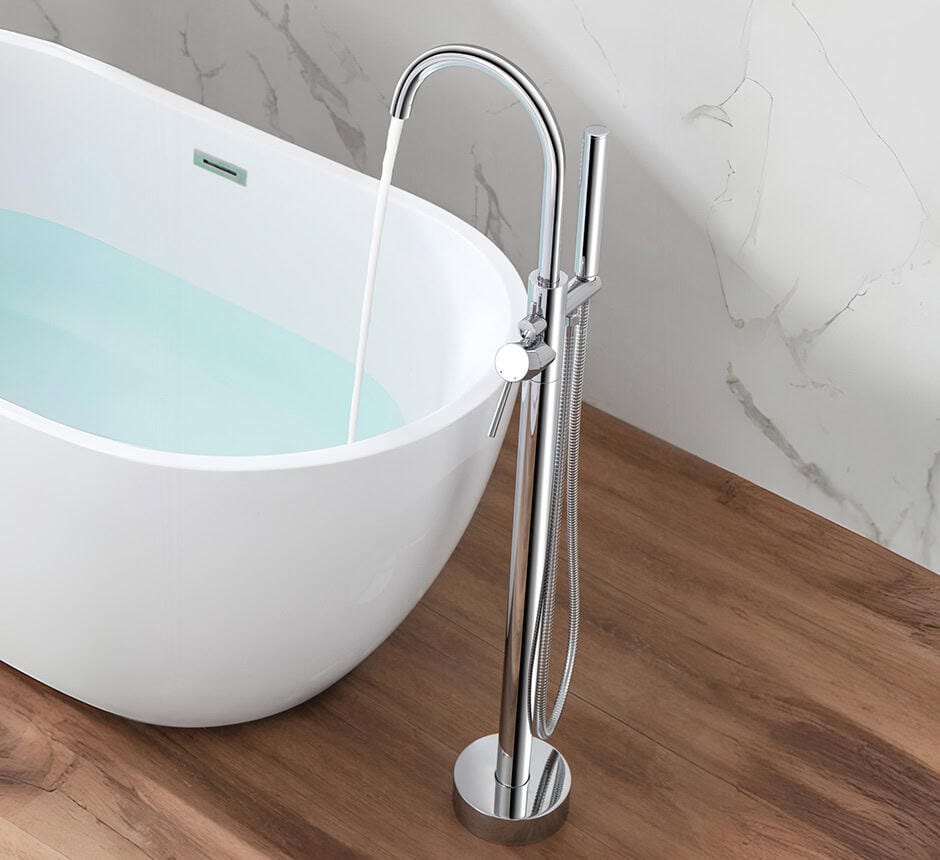
The Hidden Heroes (Valve and Plumbing): These components are installed beneath the floor and are indispensable for the faucet’s function and stability.
- Valve (Rough-in Valve): The hidden part that connects to home water pipes and directs water to the faucet. Must match the faucet brand.
- Hot & Cold Supplies: Pipes or hoses (usually copper or PEX) that bring water to the valve.
- Mounting Bracket & Floor Bolts: Keep the faucet securely attached to the floor.
- Cartridge: Inside the handle; controls water flow and temperature. Ceramic types last longer.
- Retaining Nut: Holds faucet parts in place.
- Flexible Connector: Hose linking water supply to the faucet or tub.
- Shut-Off Valve: Lets you turn off water for maintenance or emergencies.
- Tempering Valve: Mixes hot and cold water to maintain safe output temperature.
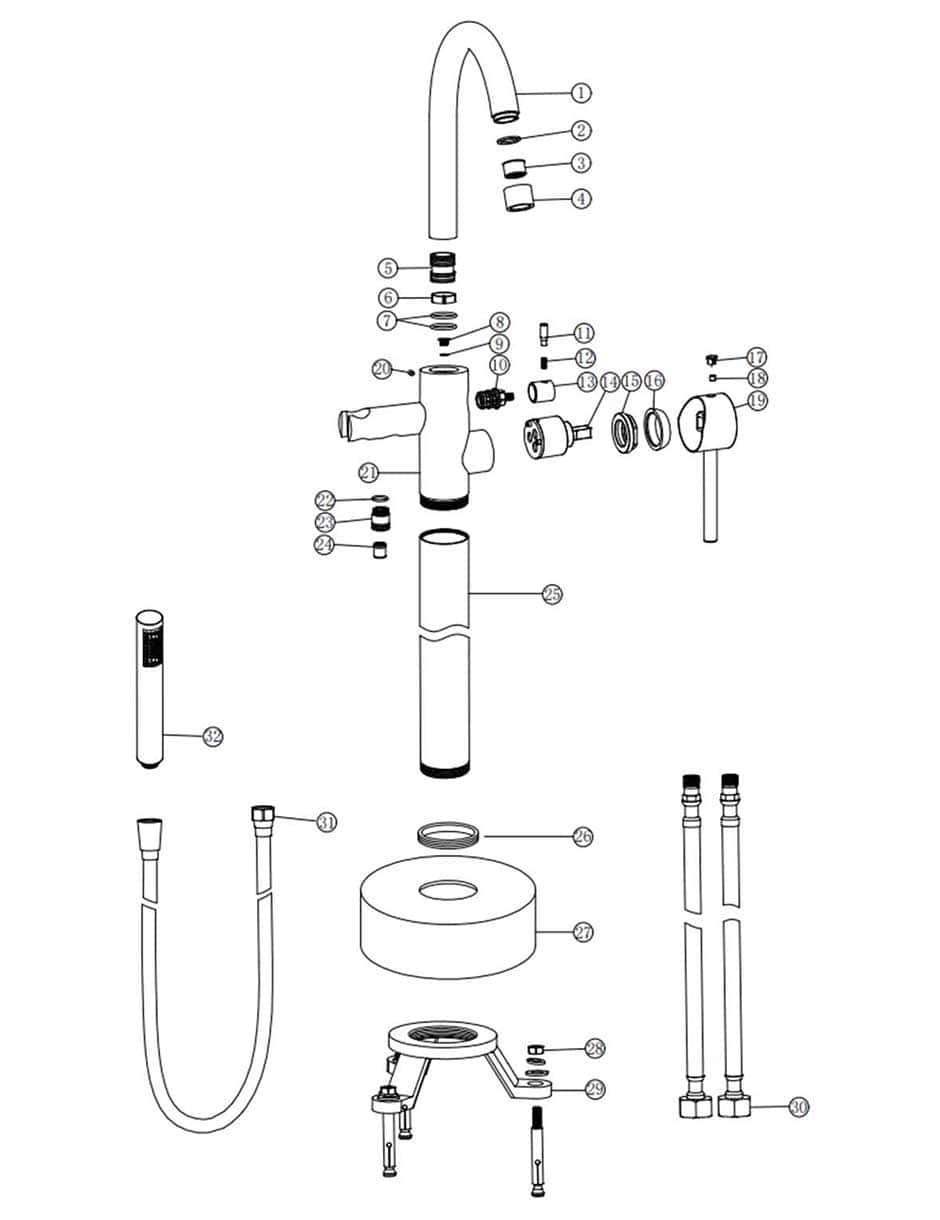
Choosing Your Perfect Freestanding Tub Faucet
Style & Aesthetics
When choosing a freestanding tub faucet, how it looks is often the most important thing to think about. These taps come in many styles, from traditional to modern, so you can choose the one that goes best with the rest of your bathroom.
Functionality & Convenience
Beyond aesthetics, the functionality of a faucet is paramount for a truly enjoyable bathing experience.
Exploring More Faucet Types
While freestanding tub faucets offer a distinct elegance, the world of bathtub fillers is much broader! Beyond standalone options, there are several other types of bathtub faucets, each suited for different tub styles and installation preferences. To understand all the varieties and see which might fit other bathrooms or projects, click here:
Understanding the Investment: Costs and Value
| Cost Category | Price Range (USD) | Factors Influencing Cost | Relevant References |
|---|---|---|---|
| Faucet Unit – Low End | $50 – $350 | Basic models, common materials (e.g., zinc), fewer features. | Angi» |
| Faucet Unit – High End | $1,000 – $3,400+ | Luxury models, premium materials (e.g., brass), advanced features, high-end brands. | Home Guide» |
| Average Faucet Unit | $150 – $2,200 | General range for freestanding faucets. | Home Advisor» |
| Labor Cost – Basic Installation | $100 – $400 | Simple replacement, minimal plumbing adjustments. | Home Advisor» |
| Labor Cost – Complex Installation | $600 – $750+ | Extensive plumbing work, floor modifications, new tub installation. | Angi» |
| Total Installation – Average | $550 | Faucet unit + labor for typical freestanding faucet installation. | Home Advisor» |
| Total Installation – High End | $1,000 – $2,000+ | Luxury faucet + complex installation + additional plumbing work. | Angi» |
| Additional Plumbing Work | $150 – $2,200 | Pipe replacement, leak repair, shower valve replacement, drain repair. | Home Advisor» |
Note: Specific costs depend on actual circumstances.
Freestanding Tub Faucet Installation: A Closer Look
Curious about the technical side of getting your new faucet set up? If you want to understand how to install a freestanding tub faucet, including the steps involved and what a professional plumber handles, check out this link:
Keeping Your Faucet Pristine: Maintenance and Longevity
Daily Care Tips: Keeping That Shine
Once an investment has been made in beautiful freestanding tub faucets, maintaining its pristine appearance for years is a natural desire. The key to preserving its finish and ensuring longevity lies in consistent care.
- Cleaning Products:
Use a soft washcloth with warm water and non-abrasive hand or dish soap for cleaning. Avoid harsh cleansers, scouring pads, or stainless steel sponges, as they can damage the finish. - Drying Practices:
Dry faucets, including the spout, drain, and handles, after each use to prevent water spots on finishes like polished brass, chrome, or stainless steel. This also reduces mineral deposits and tarnishing, especially in areas with high-mineral water, avoiding potential fixture replacement. - Applying Wax:
For matte or textured finishes like Brushed Nickel or Brushed Gold, periodically apply non-abrasive wax (e.g., car or furniture wax) to prevent mineral buildup. Avoid wax on intentionally aged finishes.
Tackling Buildup: When Daily Care Isn’t Enough
To prevent permanent damage from mineral buildup despite regular cleaning, act quickly. Soak a washcloth in warm water mixed with a little white vinegar, place it over the affected area for a few hours to loosen buildup, then wipe it away. Also, clean the drain assembly, often neglected but frequently exposed to water and products.
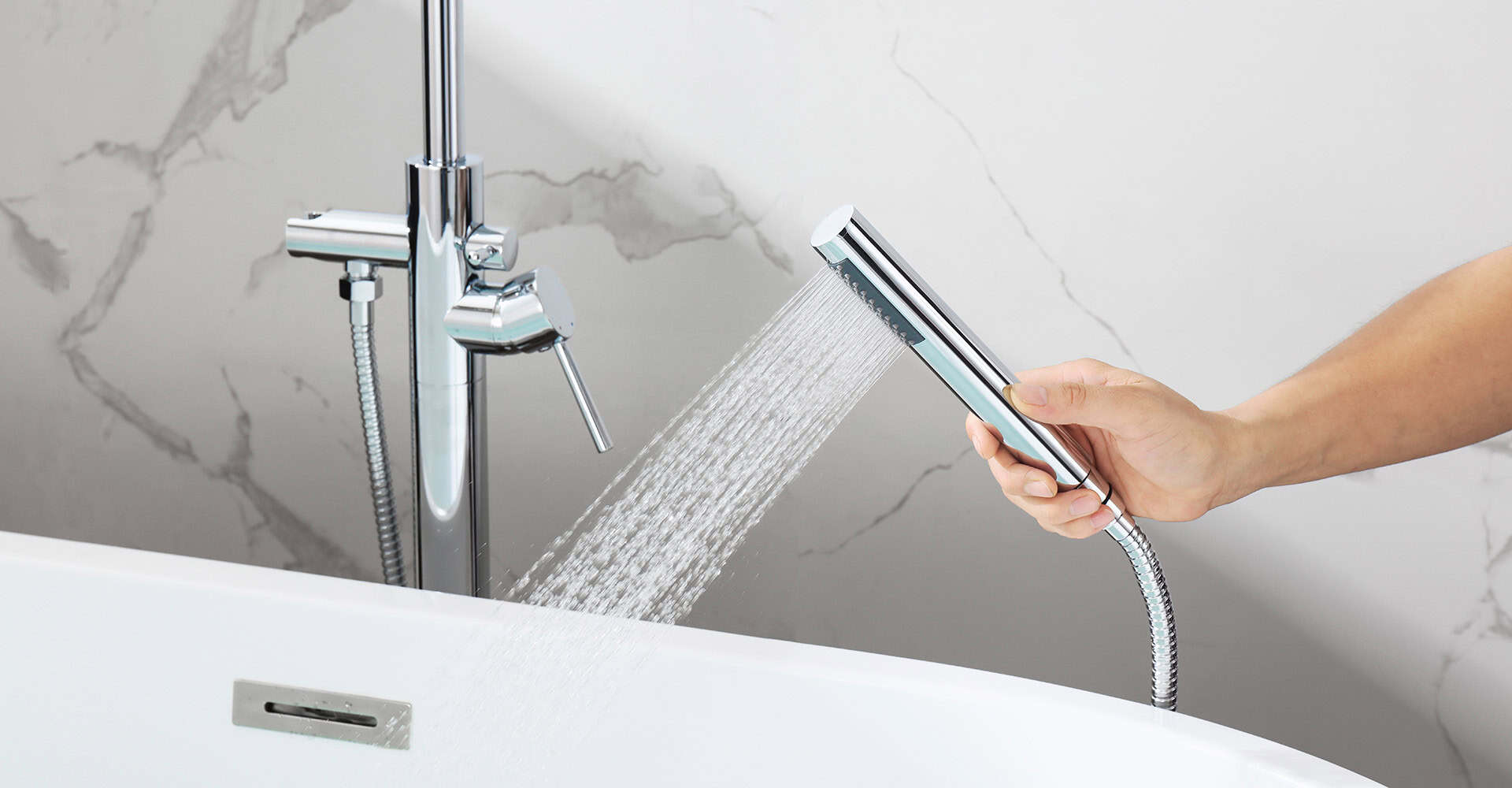
Warranty Wisdom: Protecting Your Investment
Before purchasing, it is highly advisable to investigate the warranty offered by the manufacturer. This provides protection for the investment against manufacturing and mechanical defects.
- Typical Coverage:
Many faucet warranties provide a lifetime limited warranty against leaks, drips, and finish defects for non-commercial use by the original purchaser. For commercial settings, warranties often last 5 years. Some brands offer a 5-year warranty on faucets and brass accessories. - Important Exclusions/Conditions:
Understand warranty exclusions and conditions. Warranties typically exclude labor and expedited shipping costs for repairs or replacements, as well as normal wear and tear, damage from daily use, or natural finish changes (e.g., copper or bronze). Damage from improper installation (often requiring a licensed plumber for validity), misuse, abuse, alteration, or improper cleaning/neglect is also not covered.
Expert Advice for Your Freestanding Tub Faucet
Prioritizing Durability
This guide emphasizes the importance of durability in freestanding tub faucets. Choose a high-quality faucet, typically made from robust materials like brass, to endure daily use and maintain its aesthetic appeal for years. A quality investment prevents issues like a wobbly faucet or premature wear, avoiding costly repairs and ensuring your renovated bathroom remains a relaxing sanctuary.
When to Call in the Experts
Although DIY projects are appealing, hire a professional plumber for freestanding tub faucet installation. Unlike wall-mounted faucets, these require complex floor modifications, routing water lines beneath the floor, and securely anchoring the rough-in valve. A licensed plumber ensures water-tight seals, proper placement to prevent splashing or tripping hazards, and compliance with local codes, minimizing leaks, damage, and ensuring warranty validity.
Featured Freestanding Tub Faucet Product Recommendation: LuxuryHome
If you’re sourcing high-quality freestanding tub faucets, LuxuryHome» is a great choice. They offer a wide range of styles and finishes—like polished chrome, matte black, and brushed gold—to match any bathroom design. Known for premium quality and excellent service, they also provide OEM and ODM support for custom designs and branding. With low MOQs and reliable after-sales service, they’re ideal for both large and small projects.
Interested in Freestanding Tubs Too?
If you’re already thinking about the perfect faucet, you might also be curious about the freestanding tubs themselves! They come in a vast array of styles, materials, and sizes, each offering a unique aesthetic and bathing experience. To dive deeper and find the ideal tub for your space, click here:
Discover Top Bathtub Suppliers
For those looking to source bathtubs, whether for a personal project or business, understanding the manufacturing landscape is key. If you’re interested in exploring some of the leading bathtub suppliers from China, known for their extensive range and competitive offerings, find a detailed overview here:
Making Your Final Decision: Your Confident Path to a Perfect Bathroom
We have now looked in detail at how they are put together, what you need to think about when you are buying one, how much they cost to buy and look after, and how to look after them. You should now feel ready to make an informed decision. It’s important to balance how things look with how they work. Always make safety features like anti-scald and tempering valves a top priority, and think about the full cost of installation. When choosing a faucet, you need to think about things like the material, how it looks, how much water it can get through, and where you’re going to put it. This is more than just picking a faucet; it’s about making a bathroom that looks great and will make you happy for a long time.
FAQs
About Luxuryhome
Luxuryhome is not just a faucet manufacturer or wholesaler, but more like a partner who can provide you with more added value.
We are united in our determination to produce China-made bath and kitchen fixtures adhering to the highest ethical principles. You have our promise!
More post you may interested in

